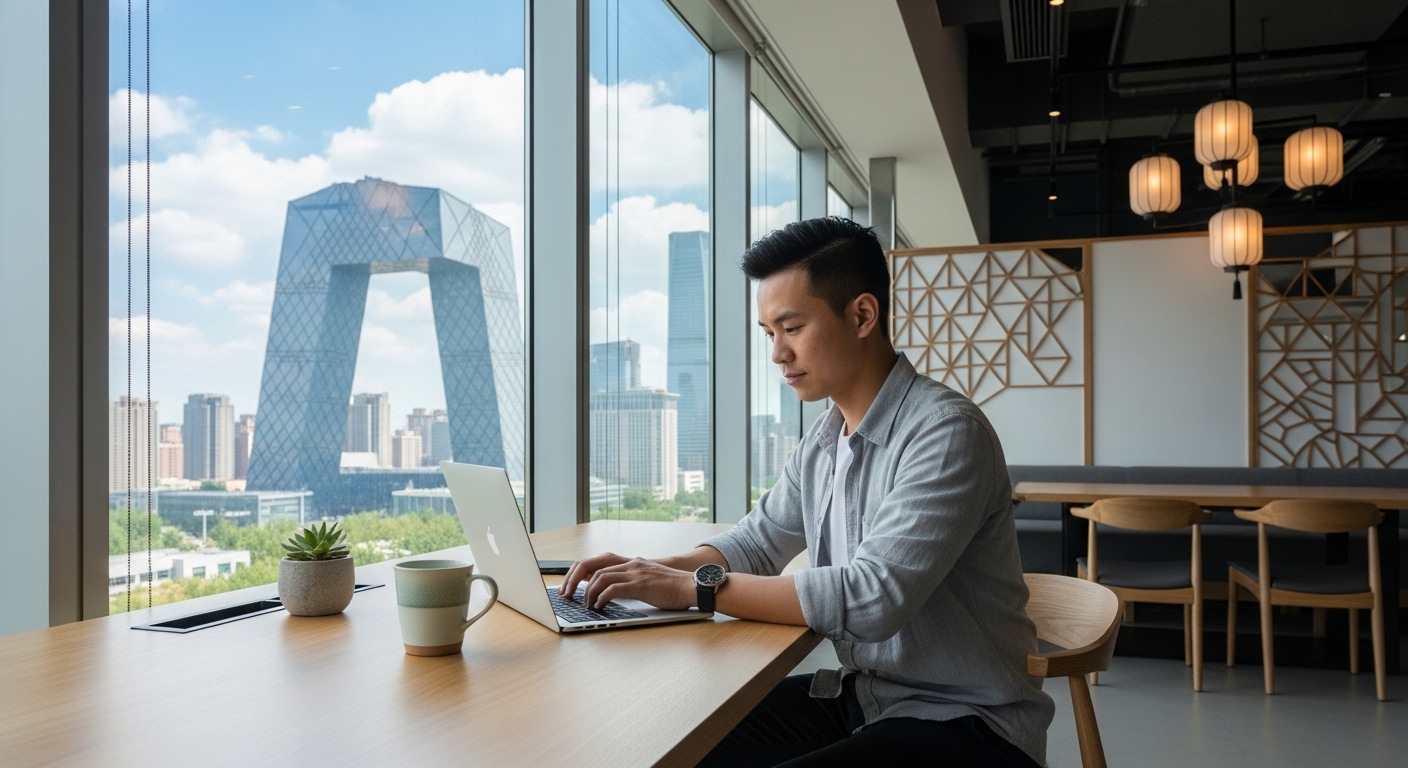In the vibrant, ever-moving landscape of modern work, achieving a state of deep, uninterrupted focus—often called ‘flow’—is the new currency of productivity. For the modern professional, this challenge is amplified in the dynamic and socially charged environments of coworking spaces. These hubs of innovation offer immense benefits in networking and flexibility but also present a unique set of obstacles to concentration. As companies and individuals increasingly embrace hybrid models, mastering the art of deep work within a shared setting is no longer a luxury but a critical skill for professional growth and mental well-being. This is particularly true in a city known for its bustling creative and tech scenes, where the energy is as infectious as it is potentially distracting.
This guide explores the essential strategies for cultivating focus and achieving peak productivity within a shared office. We will deconstruct the science behind the ‘flow state’ and provide actionable frameworks to harness its power. From architecting your personal workspace for minimal distractions to leveraging specific time management techniques like the Pomodoro method, we’ll cover the tactical side of daily execution. Furthermore, we’ll delve into the psychological aspects, such as setting clear boundaries and managing social energy, which are crucial for maintaining concentration. For professionals navigating the unique coworking ecosystem of Berlin, these strategies are designed to transform a potentially chaotic environment into a powerhouse of personal achievement, allowing you to tap into the city’s collaborative spirit without sacrificing the profound benefits of deep work.
Architecting your personal focus zone
The first step to unlocking deep work in a shared space is to reclaim a sense of territoriality and control over your immediate environment. While you can’t control the entire office, you can architect a personal ‘focus zone’ at your desk. This begins with decluttering. A clean, organized workspace minimizes visual distractions that can pull your attention away from the task at hand. Only keep essential items within arm’s reach: your laptop, a notebook, a pen, and a water bottle. Everything else should be stored away. The principle here is simple: every object in your line of sight is a potential distraction, a mental loose thread. By curating your physical space, you are also curating your mental space. Consider investing in a laptop stand and an external keyboard and mouse. This ergonomic setup not only benefits your posture but also establishes a more permanent, professional feel to your hot desk, signaling to your brain that this is a space for serious work. Strategic placement of personal items, like a small plant or a framed photo, can also help create a sense of ownership and comfort, making it easier to settle into a focused mindset amidst the surrounding activity.
Mastering the art of noise control
Noise is perhaps the most cited challenge to productivity in coworking environments. The ambient chatter, phone calls, and foot traffic can constantly fracture your concentration. The solution lies in a multi-layered approach to noise control. High-quality, noise-canceling headphones are a non-negotiable investment for any serious coworking professional. They serve a dual purpose: actively blocking out distracting sounds and acting as a universal ‘do not disturb’ sign to your colleagues. Experiment with different types of audio to find what aids your focus best. Some professionals thrive on instrumental music or ambient soundscapes (like rain or coffee shop sounds), while others find that complete silence, or even white noise, is most effective. Beyond headphones, be strategic about where you choose to sit. Many coworking spaces are designed with different zones in mind. Identify the designated quiet areas or ‘library rules’ sections for your most demanding tasks. For important calls or virtual meetings, always book a private phone booth or small meeting room in advance. This not only ensures your own privacy and call quality but also shows respect for those around you who are trying to concentrate.
Implementing a time-blocking productivity system
Deep work requires sustained, uninterrupted blocks of time. In a flexible coworking environment, it’s easy for the day to become fragmented by spontaneous conversations, coffee breaks, and the general ebb and flow of the office. To counteract this, you must be ruthlessly intentional with your schedule. Time-blocking is a powerful method where you divide your day into specific blocks, assigning a single task or project to each. For example, you might block 9:00 AM to 11:00 AM for ‘Deep Work: Project Alpha,’ followed by a 30-minute block for checking emails, and then another deep work session. This approach prevents multitasking and forces you to single-task, which is essential for entering a flow state. The Pomodoro Technique is an excellent complementary practice; it involves working in focused 25-minute intervals separated by short 5-minute breaks. This helps maintain high levels of concentration over long periods and prevents burnout. Crucially, you must treat these scheduled blocks as unbreakable appointments. Communicate your schedule to your immediate team and use your digital calendar and status (e.g., on Slack or Teams) to signal when you are in a deep work session and cannot be disturbed.
Setting digital and social boundaries
In the modern workplace, distractions are not just physical; they are digital and social. Constant notifications from emails, messaging apps, and social media are the enemies of deep work. You must establish firm digital boundaries. During your time-blocked focus sessions, turn off all non-essential notifications on your computer and phone. Better yet, use apps and browser extensions that temporarily block access to distracting websites. This removes the temptation and the willpower required to resist it, freeing up mental energy for the actual work. Social boundaries are equally important. While the community aspect of coworking is a significant benefit, it’s essential to manage your social energy. Be friendly and open to conversation during breaks or in designated social areas, but be firm in protecting your focus time. A polite, “It’s great to see you! I’m in the middle of a deep work session right now, but can we catch up over lunch?” is an effective way to set a boundary without being rude. Many professionals in the thriving tech and creative scenes of Berlin find that mastering this balance is key to leveraging the networking opportunities without compromising on their core tasks.
Leveraging technology for enhanced focus
While technology can be a primary source of distraction, it can also be a powerful ally in your quest for productivity. Beyond simple notification management, a suite of tools can help you create an optimal environment for deep work. Focus-enhancing apps like Freedom or Cold Turkey can enforce your digital boundaries by blocking distracting sites and applications across all your devices for a set period. Project management tools such as Asana, Trello, or Monday.com are invaluable for breaking down large projects into manageable tasks, allowing you to focus on one component at a time without feeling overwhelmed by the bigger picture. This clarity is fundamental to achieving flow. Furthermore, consider using a digital note-taking application like Evernote or Notion to quickly capture random thoughts or ideas that pop into your head during a focus session. Instead of letting an unrelated idea derail your train of thought, you can jot it down in a trusted system and immediately return to your primary task, confident that the idea is saved for later. This practice of ‘mind dumping’ is crucial for maintaining a clear and focused mental workspace.
The strategic importance of breaks and recovery
The pursuit of deep work is not about working non-stop; it’s about optimizing the intensity of your focus during work periods. This intensity is unsustainable without strategic breaks and recovery. The human brain can only maintain peak concentration for a limited time, typically around 90-120 minutes. Pushing beyond this limit leads to diminishing returns and burnout. Integrating regular breaks into your workday is therefore not a luxury, but a biological necessity for high performance. The short breaks in the Pomodoro Technique are perfect for this, but you should also schedule longer breaks, such as a proper lunch away from your desk. During these breaks, it is crucial to truly disconnect. Avoid the temptation to check your email or scroll through social media. Instead, get up, stretch, walk around, or step outside for some fresh air. Physical movement and a change of scenery can help reset your brain and replenish your cognitive resources. This principle of strategic disengagement allows you to return to your work with renewed energy and a sharper focus, enabling you to sustain high-quality output throughout the entire day and fully enjoy the dynamic professional environment that cities like Berlin are famous for.
Cultivating a deep work mindset
Ultimately, achieving a flow state consistently is about more than just tactics and tools; it’s about cultivating a deep work mindset. This involves a fundamental shift in how you view your time and attention. Instead of seeing your day as a series of tasks to be checked off, view it as a finite resource of high-quality focus that must be protected and allocated wisely. This mindset begins before you even arrive at the coworking space. Start your day with a clear intention. Identify the one or two most critical, high-leverage tasks that require deep concentration and prioritize them. Make these your primary focus for the day. This practice, often called ‘eating the frog,’ ensures that you dedicate your peak mental energy to your most important work. Furthermore, a deep work mindset requires training your brain to resist the constant lure of novelty and distraction. This can be cultivated through practices like meditation and mindfulness, which improve your ability to control your attention. It’s a long-term commitment, not a quick fix. By consistently applying these principles—protecting your time, prioritizing deeply, and training your focus—you build the mental discipline required to thrive in any work environment, transforming the potential chaos of a shared office into a powerful catalyst for your most meaningful work.
In conclusion, the ability to achieve a flow state and perform deep work is a superpower for the modern professional. While the collaborative and energetic atmosphere of a coworking space presents inherent challenges to focus, it is by no means an insurmountable barrier. By taking a deliberate and strategic approach, you can engineer an environment and a routine that fosters intense concentration. It begins with architecting a personal focus zone and mastering noise control with the right tools and strategies. Implementing disciplined time-management systems like time-blocking and the Pomodoro Technique provides the necessary structure, while setting firm digital and social boundaries protects your most valuable asset: your attention. Leveraging technology to aid focus, rather than hinder it, and embracing the biological necessity of strategic breaks are crucial supporting elements. Ultimately, these practices coalesce into a deep work mindset—a conscious commitment to prioritizing and protecting your cognitive resources. For professionals aiming to excel, this holistic approach allows one to harness the immense networking and creative benefits of a shared workspace without sacrificing the profound productivity and satisfaction that only come from deep, meaningful work.





